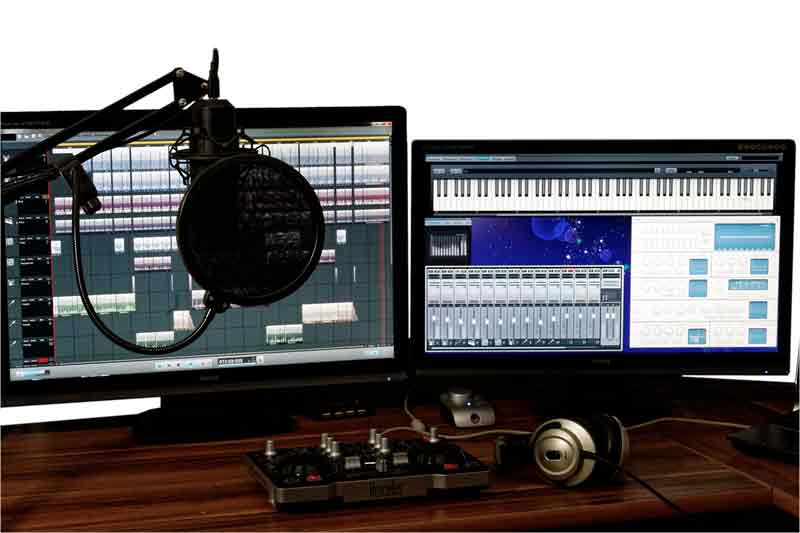
Plug-ins can include mixing, mastering and creative effects.
Audio production house software#
Plug-ins are pieces of software that run inside your DAW and allow you to process and manipulate audio in all sorts of ways.
Audio production house how to#
Music producers, mixing engineers, and mastering engineers all use a DAW (or Digital Audio Workstation) in order to process and export their final audio (here is an article on how to choose the right DAW for you). Virtually all audio production after the recording phase takes place entirely on a computer.

It’s filled with tons of educational content created by the top audio producers in the industry, and access to Control Room comes free with a One of my favorite resources for learning audio production is iZotope’s Control Room. Simply do a web search for whatever technique or concept you want to learn, and the internet won't let you down. There are loads of useful blogs and tutorials online that are great resources if you’re more of a self-driven learner. But, being able to observe the audio production experience in the real world can give you valuable knowledge and insight into the industry. Chances are, you’ll probably be running out to get a lot of coffee.

Reach out to some local studios or film crews and see if they are looking for an extra set of hands. Start an apprenticeshipĪnother route you can take to get some hands-on experience is to start an apprenticeship. Look over this list of top audio engineering schools and see if they have a program that interests you. Many universities offer audio production degrees, and often have all of the resources you’ll need to learn the tools of the trade. If you crave more structure to your learning, going to school for audio production is probably your best bet.

But, below are some great resources for you to get moving in the right direction. There really is no wrong way to learn the industry.
Audio production house trial#
Some people prefer to have a more formal education, whereas others prefer to teach themselves by trial and error. It really comes down to personal preference. When it comes to getting started in audio production, there are many paths that you could take. Most of the arranging process is handled during the songwriting phase and is often done by the producer, sometimes with help and feedback from the artist, the songwriter, or a composer. where the verses, choruses, bridge, and instrumental breaks will go). ArrangingĪrranging refers to composing the chord progression under the main melody, choosing which instruments will be used, and locking down the overall structure of the song (i.e. Sometimes music producers will hire a dedicated songwriter for a given project, or even act as the songwriter for the artists they’re working with. Songwriting is usually done by the artist or band, often with help from their producer.

Lyricists can even work independently from songwriters. Songwriting refers to crafting the lyrics and melody of a piece of music. Below, we’ll break down each phase in the music production process. But, music production can involve several people handling different aspects to help create the finished work. Modern music producers typically oversee the entire creation of a piece of music, filling many roles and responsibilities along the way. When it comes to music, the term “audio production” covers everything from the initial songwriting to the final mastering of a piece of music (and everything in between).


 0 kommentar(er)
0 kommentar(er)
